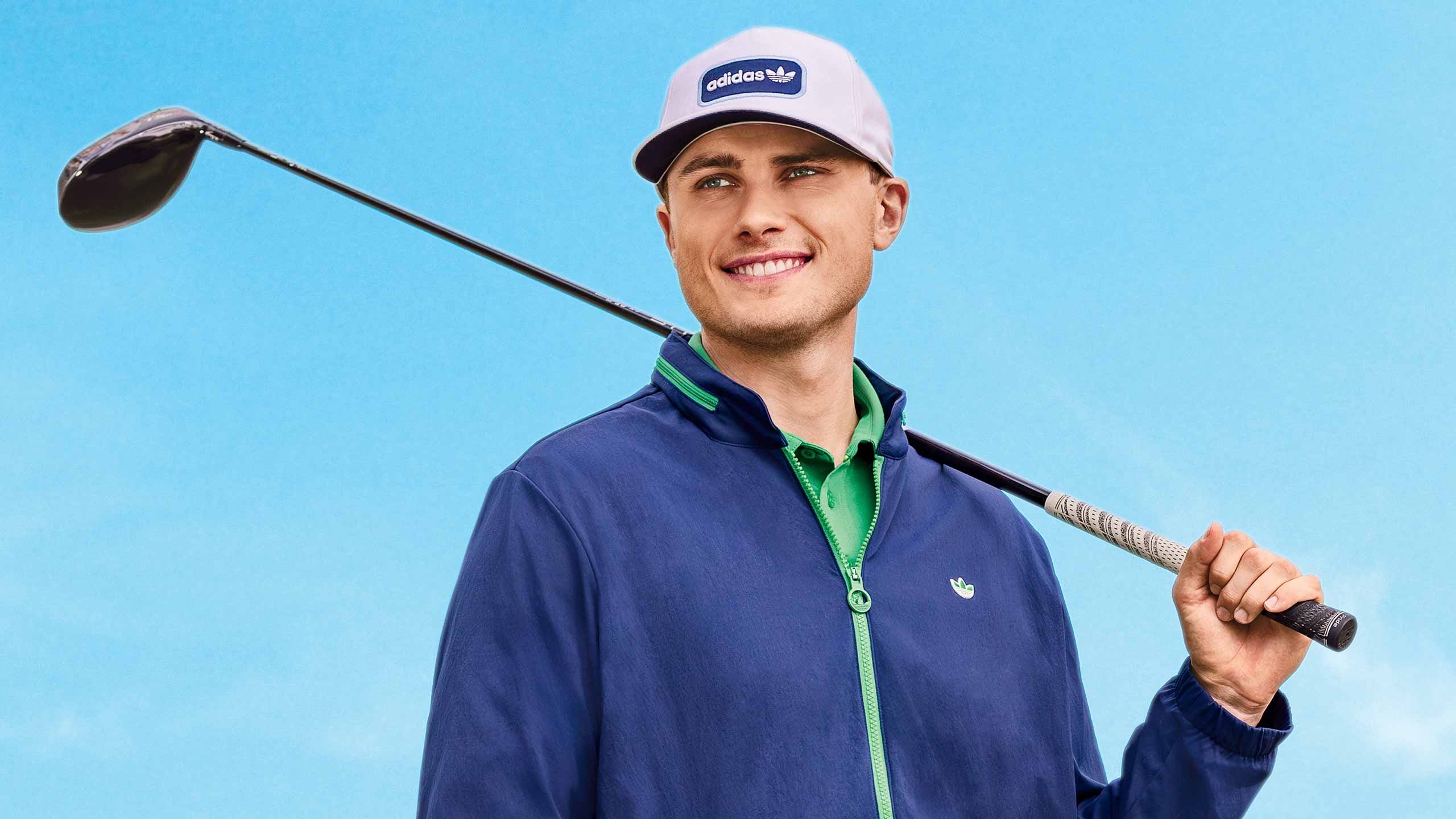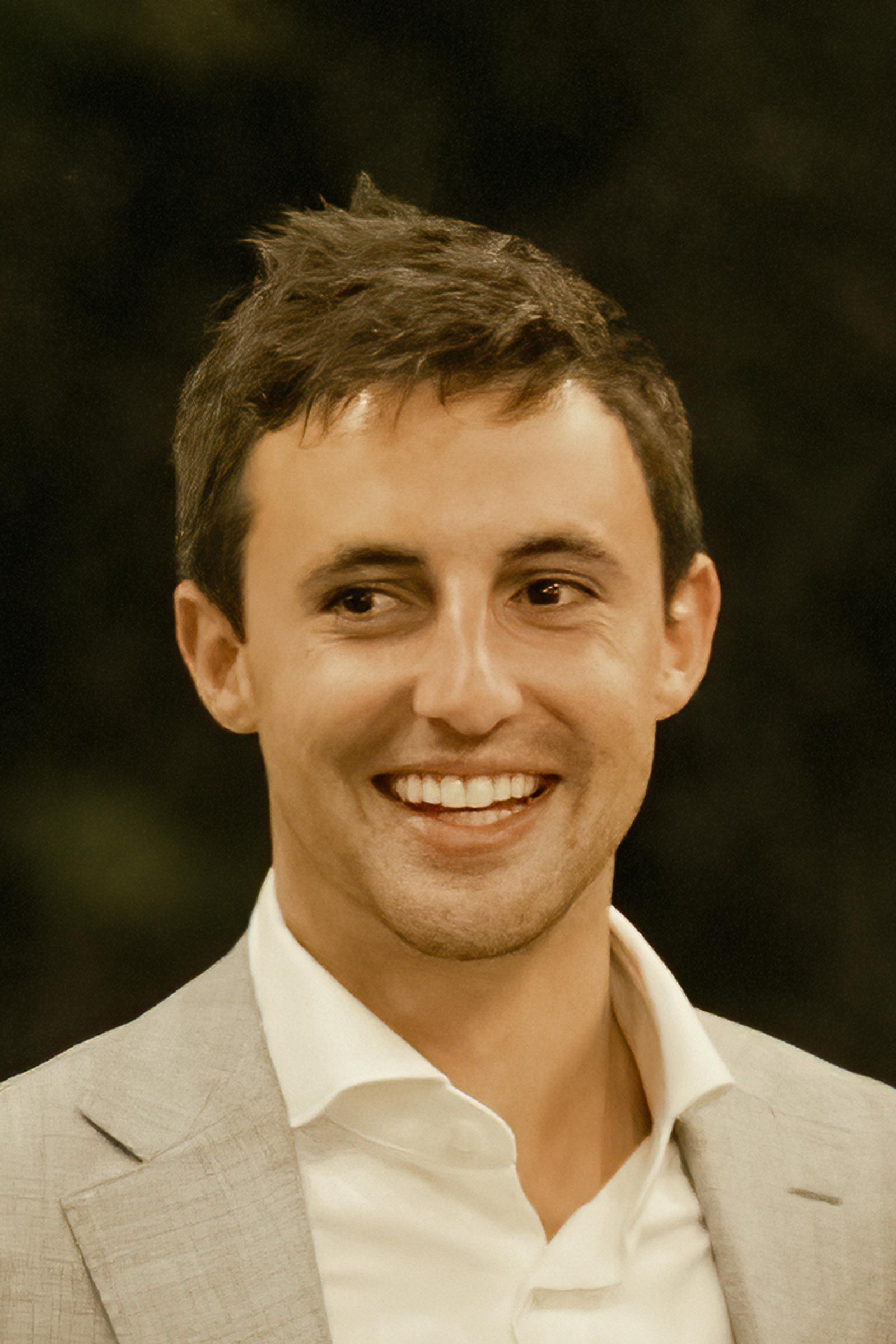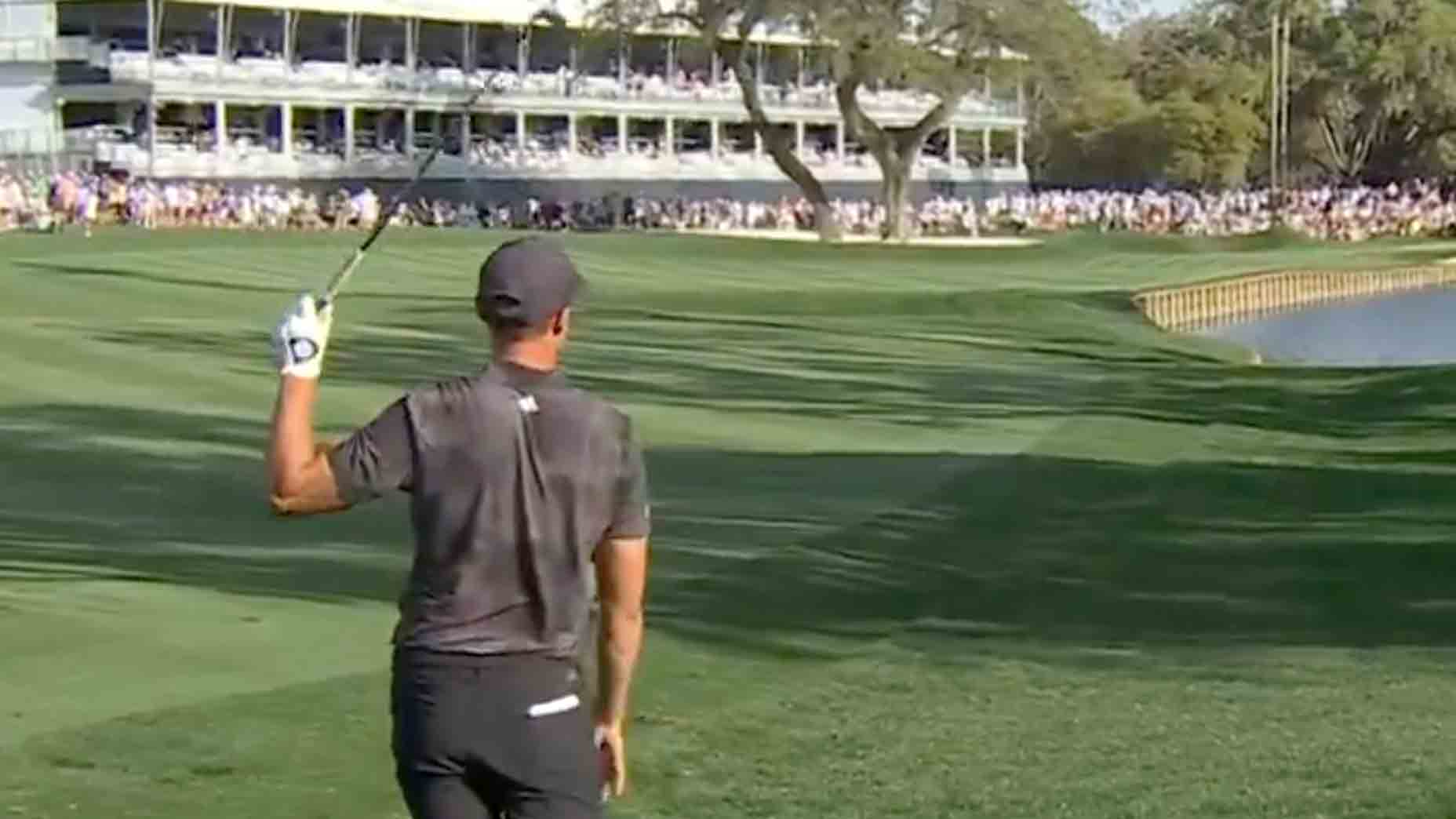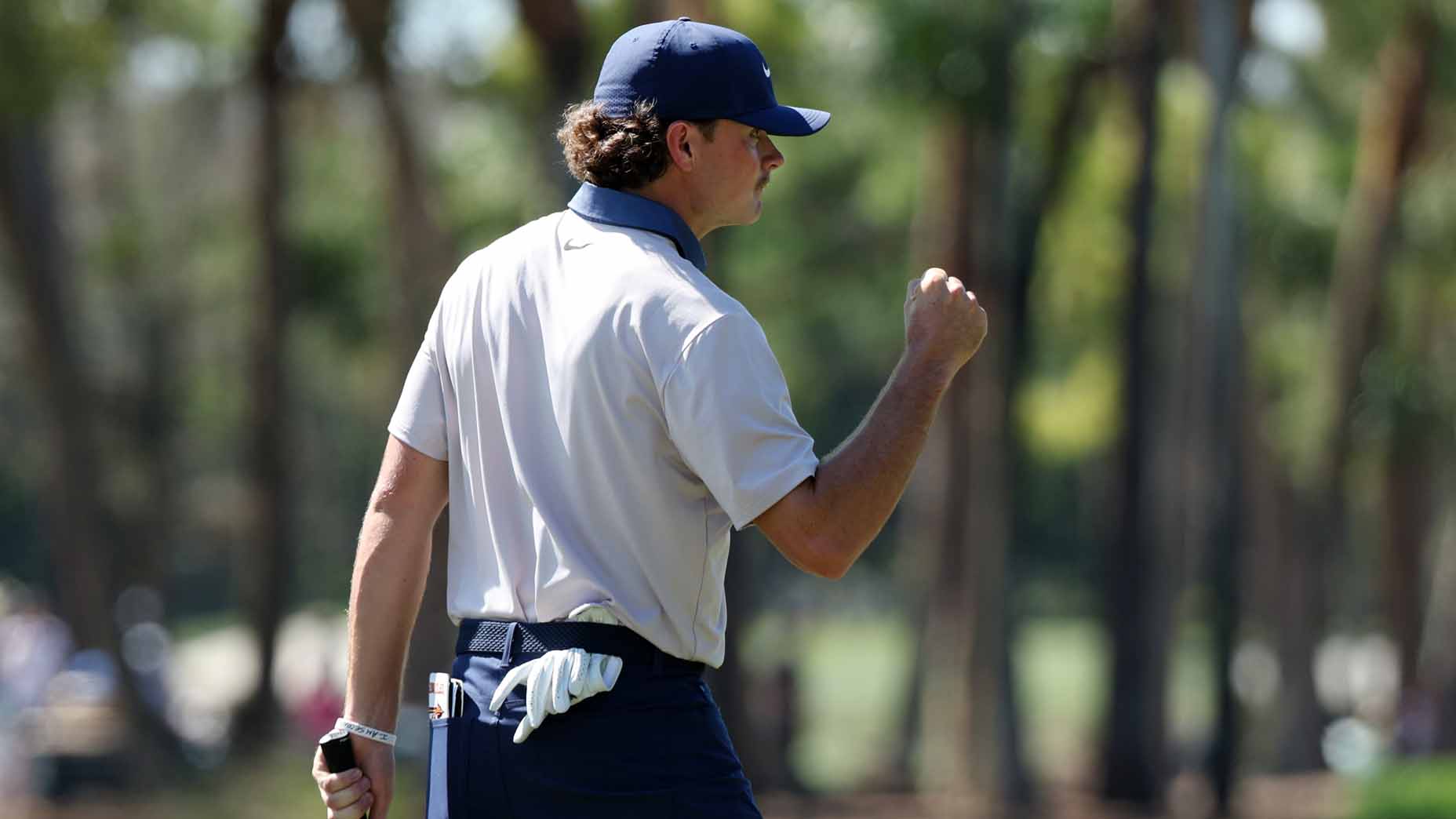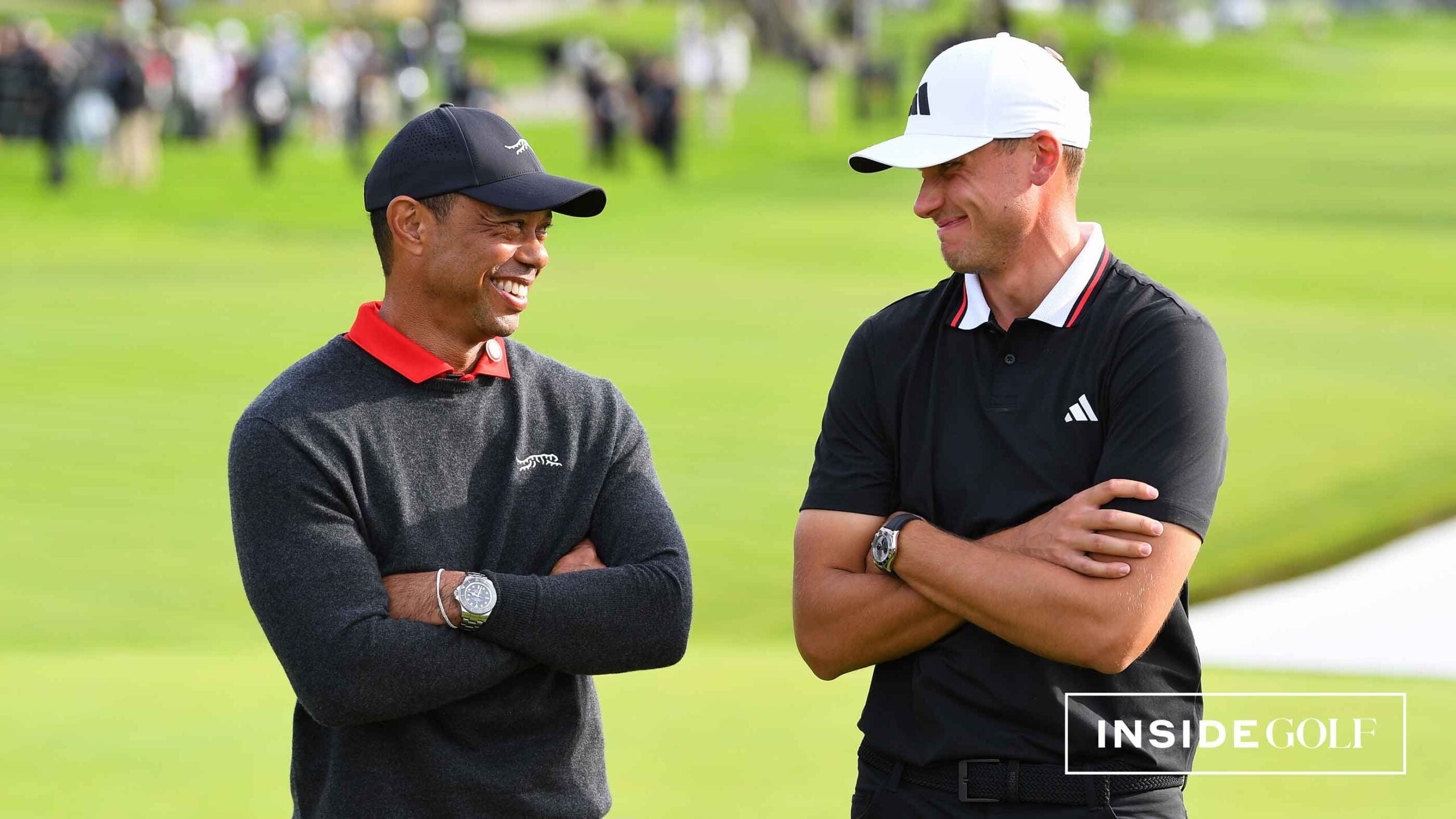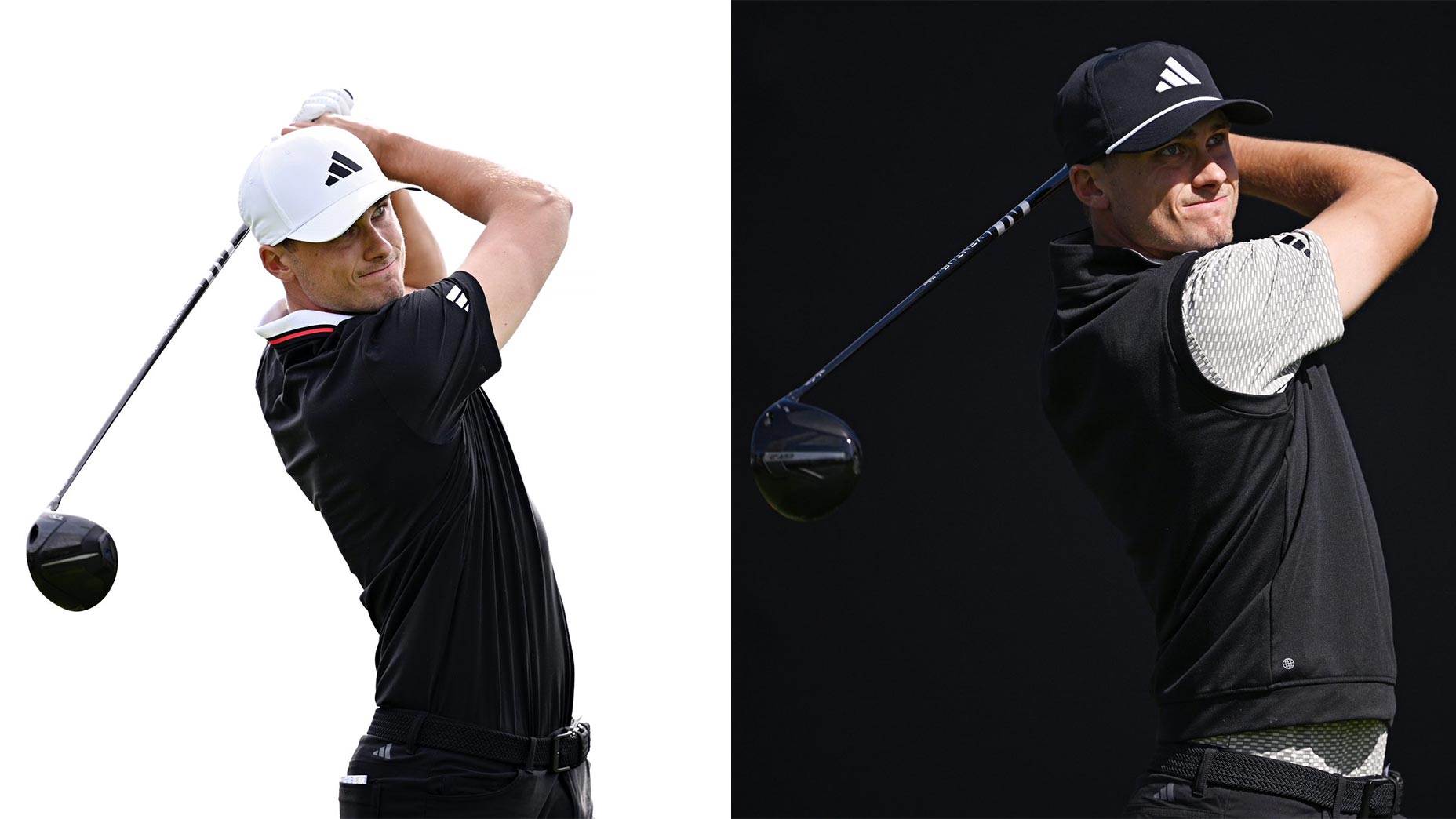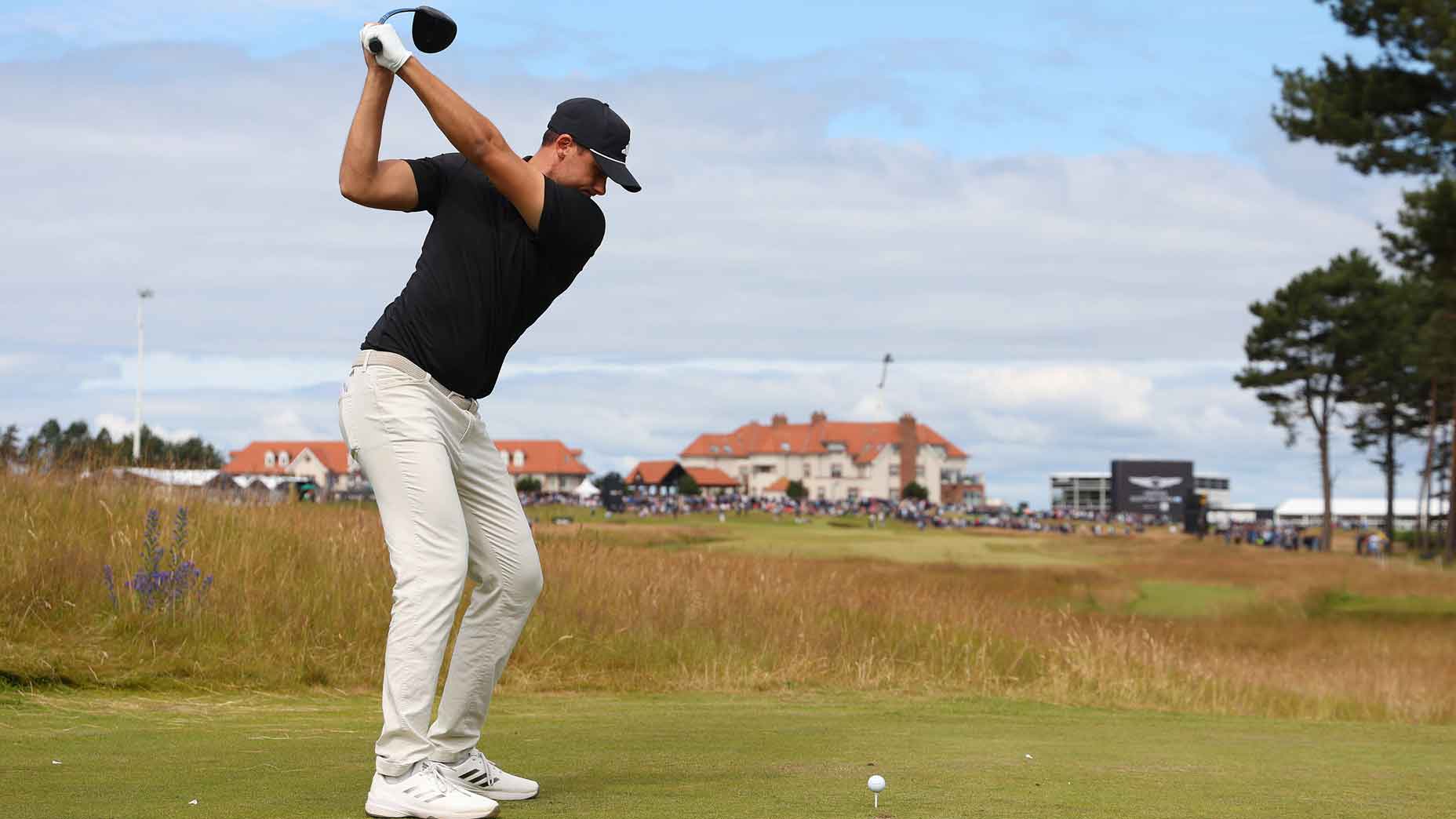WHAT’S YOUR BIGGEST WEAKNESS?
It’s my last question of the day for Ludvig Åberg and likely the least original. We’re sitting in the grill room in the clubhouse at TPC Sawgrass in Ponte Vedra Beach, Fla., home course of the PGA Tour and home to its most talented young star, who has recently relocated to Northeast Florida.
I’ve spent much of the day shadowing Åberg, the 25-year-old Swede and World No. 5, watching him hit balls and take photos, first for his clothing sponsor, Adidas, and then for GOLF, while peppering him with questions in between. We’re still weeks away from Åberg winning the biggest title of his young career, a statement, come-from-behind victory at this year’s Genesis Invitational that proved his competitive fire and calm under pressure. But now that our time together is running out, it occurs to me that I’m missing a key insight into Åberg, a requirement to make any character compelling: his flaw.
Åberg can’t think of one.
I offer suggestions. Bad temper. Sweet tooth. Trash TV habit. “I mean, I think we all have weaknesses,” he says, charitably but unconvincingly. The rest of us, maybe, I counter. Then there’s a long, drawn-out silence.
It’s a credit to Åberg (pronounced Oh-berg) that he considers the question earnestly. He lingers so long in thought that I have time to gaze out the window, catch a glimpse of roof tile, come to the realization that this place—this red-domed, 80,000-square-foot Mediterranean-style behemoth of a clubhouse charging $800 green fees to play the island-green golf course—is the polar opposite of the minimalist golfing culture in which Åberg learned the game. But he’s adaptable. His game travels, from small-town Sweden to Lubbock to Augusta and beyond. That’s among his many strengths. As for a weakness?
“Yeah, that’s a great question,” he says.
IF IT FEELS LIKE ÅBERG IS STILL NEW on the scene, that’s because he is. Two years ago at this time, he was still a student at Texas Tech. Let’s get specific: In May 2023, he won the NCAA Norman Regional in his penultimate college start and just three months later won the Omega European Masters in just his second DP World Tour event as a pro. The DP win doubled as audition; the very next week he was selected for the European Ryder Cup team, a bold but inspired choice by captain Luke Donald. It would mark the first time someone had suited up for a Ryder Cup before he’d competed in a major.
“I think he’s a generational player,” Donald explained at the time. “If he wasn’t going to play this one, he was going to play the next eight Ryder Cups. That’s how good I think he is.”
That Ryder Cup week at Marco Simone, just outside of Rome, was Åberg’s introduction to a curious golfing public. Who was this six-foot-three Swede with the athletic move and air of mystery? He hit it far. He hit it close. And he didn’t say any more than he had to. Most of the American team had never seen him play, never mind tried to beat him, but on Saturday morning he delivered a performance to remember. Åberg and Viktor Hovland were put up against the American A-squad of Scottie Scheffler and Brooks Koepka. Less than two hours later, the Team U.S.A. stars walked off the course bewildered, having been handed a 9-and-7 beatdown, the widest margin in Ryder Cup history.
“Ludvig’s a stud,” said Hovland. “He doesn’t miss a shot.”
Åberg headed stateside after a victorious Ryder Cup debut and stayed hot through the end of the 2023 PGA Tour season. He finished T2 in Mississippi, T13 in Vegas and T10 in Mexico before winning the final event on the schedule, the RSM Classic, with a preposterous 61-61 weekend. It was a fitting capstone to a wild debut. “I still pinch myself in the morning when I wake up to realize that this is what I do for a job,” Åberg said at the post-tournament presser. “It’s been so much fun.”
He started 2024 where he’d left off: top 10 at Torrey Pines, runner-up at Pebble, top 10 at the Players. By the time Åberg arrived at the Masters, a course hostile to first-timers, there were only 10 players in the field with shorter odds. By week’s end? He’d beaten everybody except Scheffler. It was the best result by a Masters rookie since 1979. And it left the golf world with two questions: Who is this guy and where did he come from?
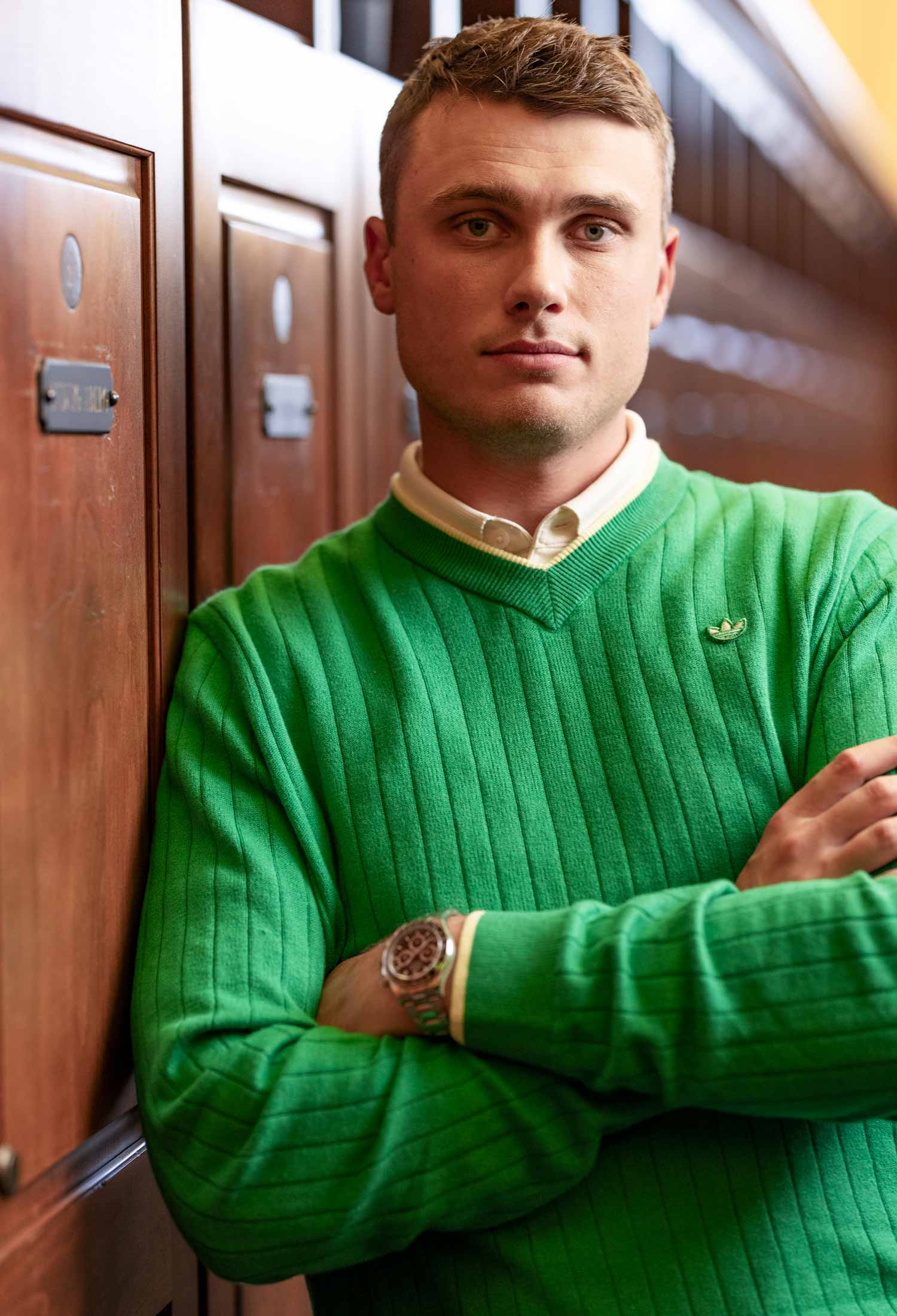
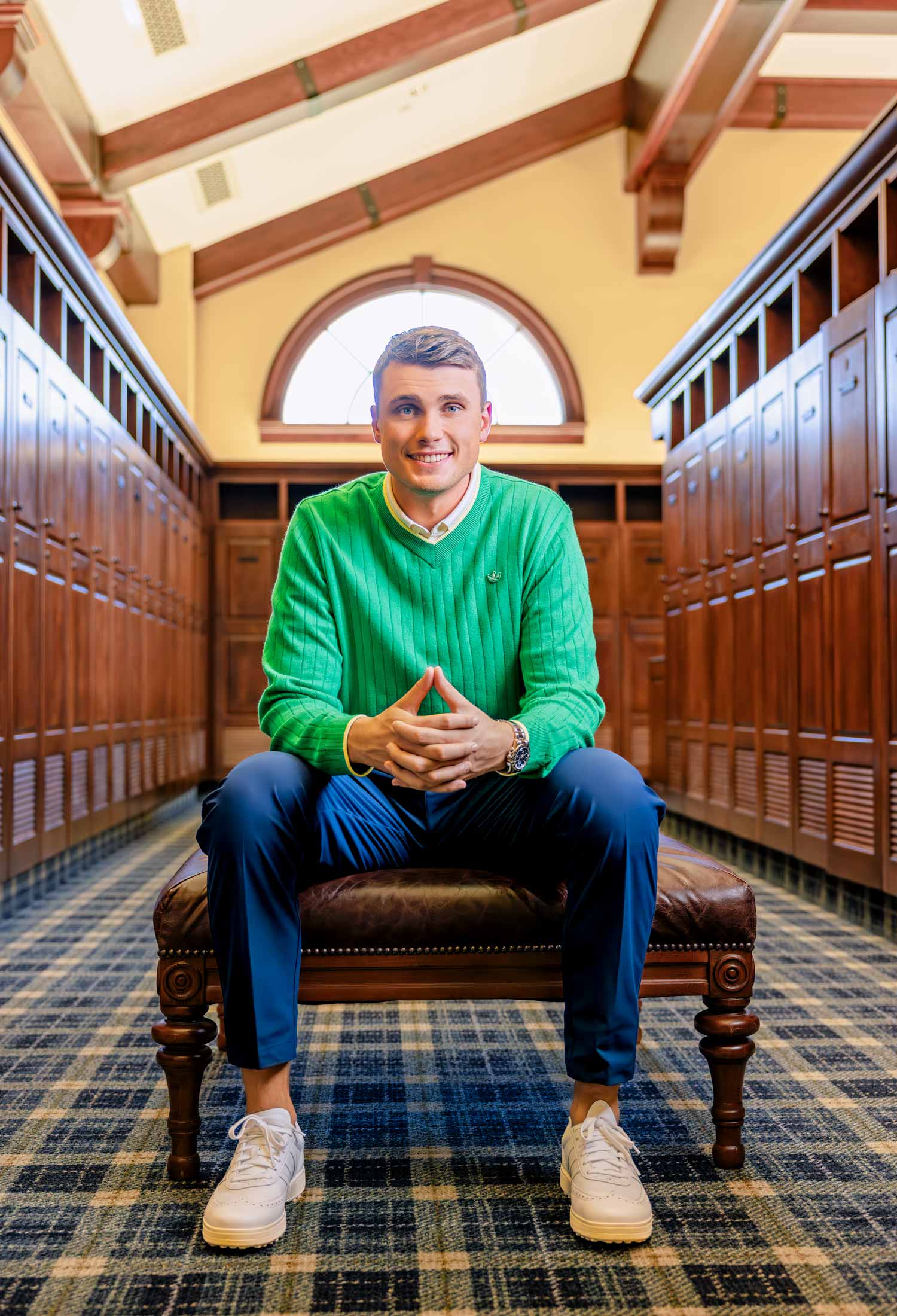
BACK AT SAWGRASS, Åberg says that it’s impossible to tackle the first question without answering the second. The where and the who are intertwined. He’s the product of a specific system, of a specific coach, of a specific school and school of thought—even if it seems counterintuitive that one of the best golfers in the world grew up in a cold-weather country.
“Don’t go in the winter,” he warns, when asked to describe his native Sweden. “It’s cold. It’s dark. Nobody wants to leave their house.”
But in the summer? Here, Åberg sounds ready to join the tourism bureau.
“It’s a beautiful country,” he says. “It doesn’t get too hot, like certain parts of America. It’s just so nice. We have daylight ’til midnight, and everyone’s barbecuing and hanging outside. And because there’s only a few weeks a year where it’s actually nice outside, everyone takes full advantage.”
Åberg was born on Halloween in 1999 in Eslov, a town of 20,000 in southeast Sweden, which he describes with a loving shrug—when he was a kid, it was voted the most boring city in Sweden. No matter—it had plenty of room for handball and soccer, and it was home to Eslovs Golfklubb, where his dad teed it up and eventually Ludvig did too.
He describes Swedes as pleasant if standoffish. “They’re very nice, very kind, but they’re also very private. You wouldn’t see people just, like, randomly talking on a bus.”
Is he that way? “Deep down I am,” he says. “But I’ve gotten a little less that way as the years pass.”
Still, he found community in a golf culture he describes as open, accessible and rather un-American. “I think we have one private club in all of Sweden,” he says. “Golf is a lot cheaper than it is [in the U.S.], so there’s a lot more availability. You don’t necessarily have to belong to a club; you can show up with your friends and pay and still go play. There’s a culture of playing and of walking. We don’t really do carts at all. And I’d say, in general, there’s less of a drinking culture in Sweden. Over here, it’s a lot more cocktails while you play.”
Everything in moderation. That’s a theme.
Åberg’s father, Johan, who sells parts for construction vehicles, was the family’s resident golf nut, but his mother, Mia, a paralegal, spotted her son’s talent and drive early on. When other six- and seven-year-olds were goofing off at early clinics, Ludvig was focused on the task at hand. But, in the years that followed, no one in his life turned any one dial too far.
He played several other sports; soccer was his favorite. But he loved golf and got good at it. To their credit, he says, Sweden’s high school golf academies view multisport athletes favorably.
“You [develop] more coordination from multiple sports,” Åberg says. “Also, there’s the team aspect. When you’re 10, being in a locker room after you’ve lost is a pretty big lesson to learn.”
That partly explains how a tall, lanky, athletic, teenage Åberg was accepted at Filbornaskolan, a sports academy and boarding school in the coastal city of Helsingborg. And that, he says, is when everything began to change.
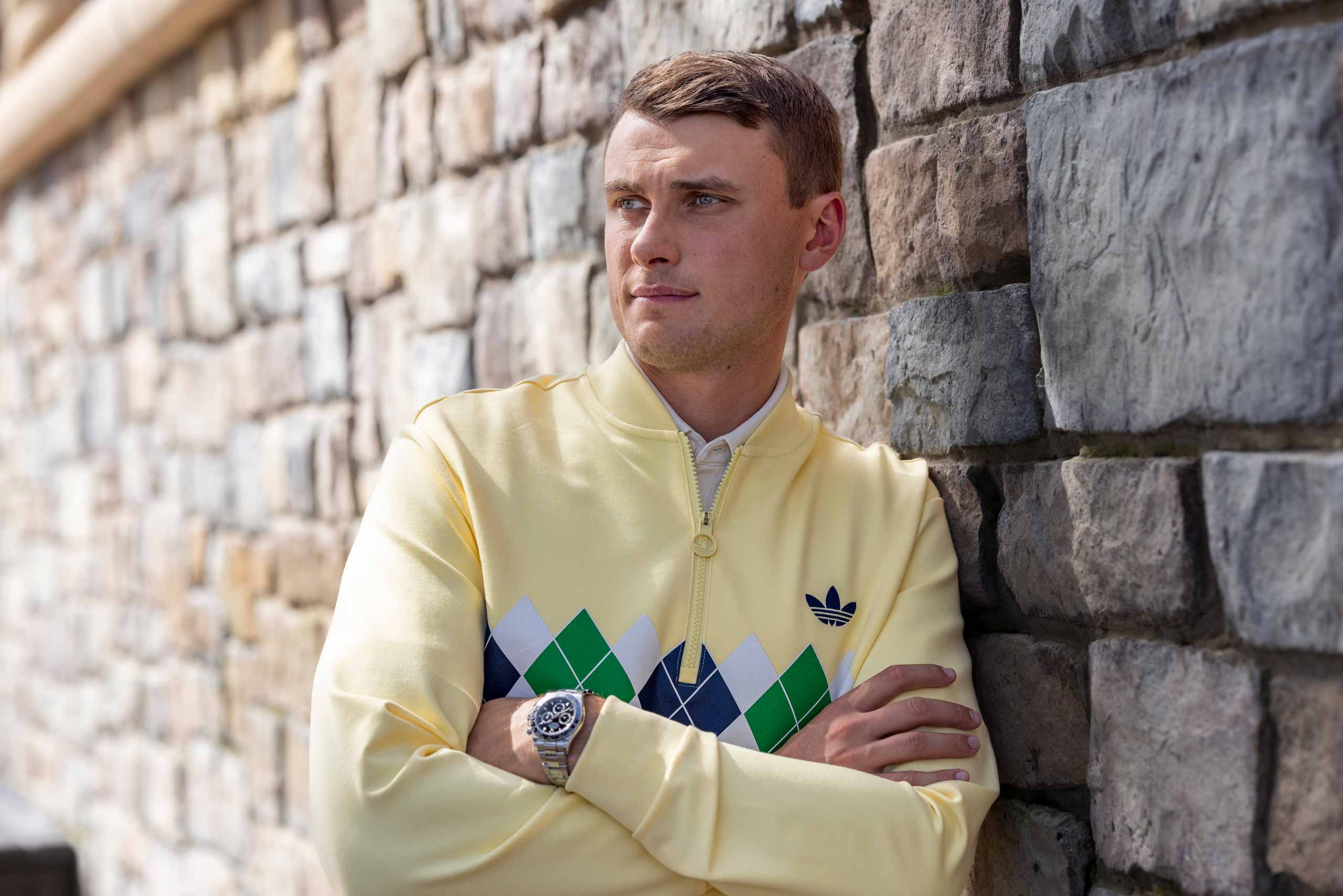
THE WEEK BEFORE ÅBERG MADE his Ryder Cup debut, five other Swedes represented Team Europe at the Solheim Cup. Åberg knew the two highest-ranked players, Maja Stark and Linn Grant, well. They were in his eight-person class at Filbornaskolan. That’s right—three of the eight, future PGA and LPGA tour stars.
How is that possible? Hans Larsson is the man to ask. He’s been coaching golf at the school for more than two decades and oversees a program that has produced more than its share of pros. The school is selective across the board; in the golf program, a typical year will feature eight total players, four male and four female, chosen from close to 100 applicants. What makes the staff ’s approach different, Larsson says, is its big-picture approach. That’s why Åberg calls Larsson a “performance coach” rather than a swing coach. And that’s why, nearly a decade after they first met, Larsson remains his close confidant.
“We’re not just telling them, ‘This is what you should do,’ ” Larsson, phoning from Sweden, says of his students. “We’re obsessed with ‘This is why you should do it.’ I think that relates to all parts of life: nutrition, training, body movement, golf skills.” By Åberg’s recall, their program “didn’t really do high school tournaments.” That’s unthinkable to the American sporting mind; we crown national champions from age six, and the very idea of competitive junior golf conjures images of stressed-out teens grinding for life-or-death pars. But despite running an elite golf program, Larsson’s focus is rarely on cutthroat competition.
“Our kids compete at an early age,” he says, “but we try to focus on what you can learn through competing rather than just the lowest score. The Swedish system, both at our school and on the national team, is quite focused on educating and getting the players a base of knowledge in order to perform at the next level.”
Larsson has seen enough cautionary tales to fear the alternative. Kids who specialize early do get results early, he says—but then they often burn out faster, quit earlier, get injured more frequently or hit a ceiling.
“I would never tell them to stop playing another sport they love [to focus on] only golf, because I don’t think that’s good in any way,” he says. “I think it’s good [that they] do a lot of different things to prepare their mind and body. That’s better for your system in the long run, even if you don’t get the results as early.”
When Åberg arrived on campus at Filbornaskolan, his talent stood out. He just wasn’t particularly keen on practice. It’s not that he was anti-practice. He just didn’t really know how. But once Larsson pointed him in the correct direction, the train left the station full steam ahead. Turns out that Åberg had a superpower, and it wasn’t his swing speed. It was his ability to absorb information and commit wholeheartedly to a plan of action.
“We did this impact drill,” Larsson recalls, “and for the next two years, every time he hit a shot he did that drill. His current backswing drill he has done for four years, every swing. The things he does he has committed to over time. A lot of kids would try something, they’d go play, they might not play well and then they’d abandon that exercise. If there’s good reason to believe in it, Ludvig sticks to it.”
Åberg makes it sound like a natural progression. Once Larsson taught him how to practice, he implemented the regimen the way a computer might install a software update.
“I think I’ve always been disciplined,” he says. “I just didn’t know any better. And obviously that made me quite a bit better pretty quickly.”
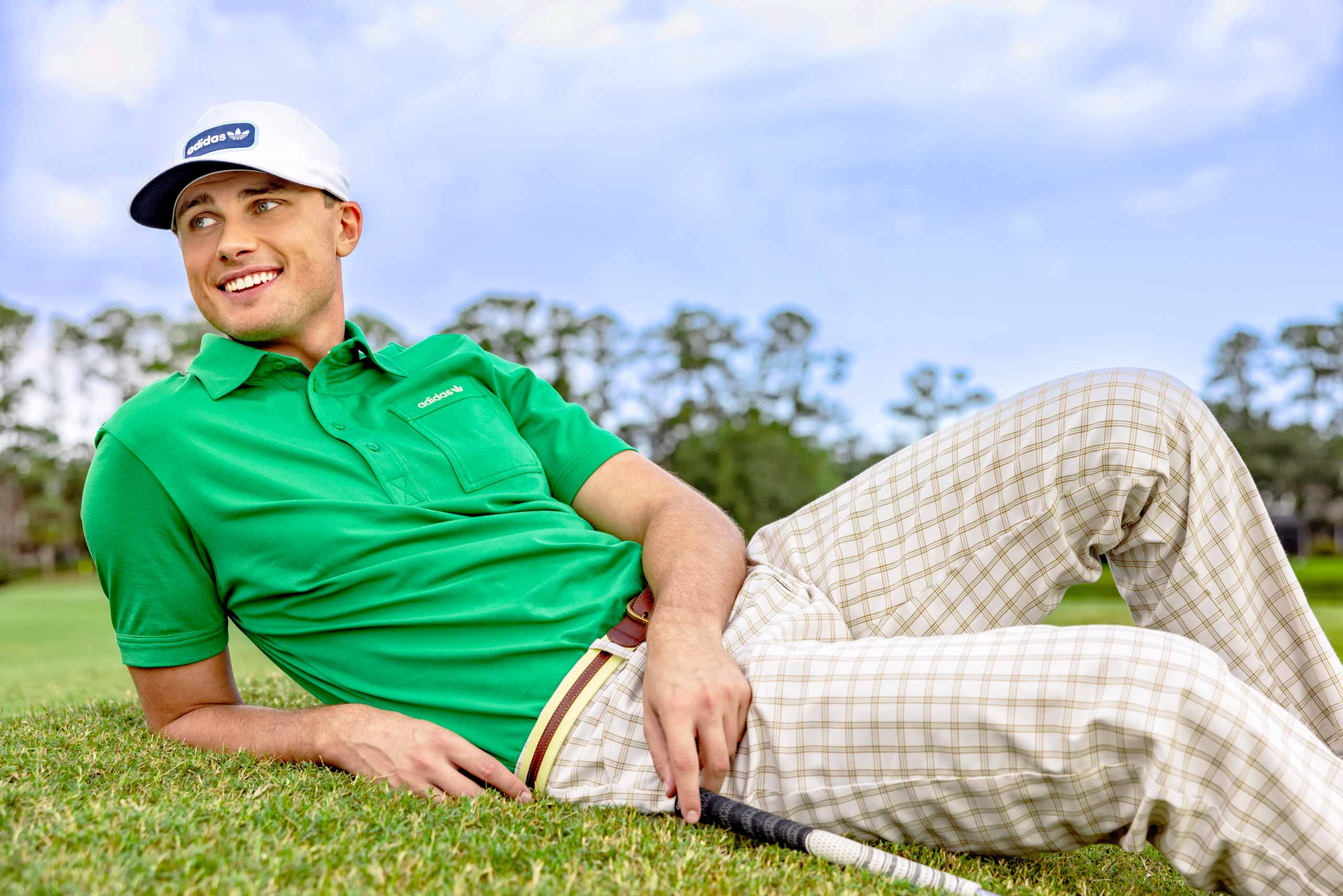
ONE WORD COMES UP AGAIN AND AGAIN as Åberg explains his approach: simple. Sometimes simple is Åberg obsessing over his fundamentals: the ball position, the grip, the setup. His swing hasn’t changed much in the decade he’s worked with Larsson. But mastering the little stuff goes a long way. When something is off, it’s usually a little thing. A simple thing.
Sometimes simple is Åberg describing things that, to mere mortals, are not simple at all. How does he go from hitting a baby fade to hitting one dead straight? “I like to keep it very simple, so it’s all just tweaks in my setup,” he says.
Other things become simple because Åberg takes action; he simplifies things for his future self. For instance, he and his caddie, Joe Skovron, meet two hours before every tee time to go over pin locations, wind and strategy.
“It just simplifies things,” Åberg says, “because when we do get to the golf course, it’s like, ‘No, this is what we said we were going to do.’ It takes away all these emotional decisions you make during a round.” Still sitting in the Sawgrass clubhouse, he gestures in the direction of Pete Dye’s Stadium Course.
“I know when I get to 12, I’m going to hit driver and I’m going to go for it,” he says, “and that just makes things easier, instead of standing on the tee box like, ‘Should I hit 4-iron?’”
In Åberg’s syntax, simple is synonymous with the clearest course of action. It makes the thinking the rest of us do look messy by comparison. Åberg’s swing looks simple too. That doesn’t mean you could easily adopt either as your own.
“No matter what I do today, I’m going to do the same thing tomorrow,” he says. “So, no matter if I win or I don’t win today, I’m still going to go out tomorrow and do the same thing.”
Einstein famously said that the definition of genius is taking the complex and making it simple—and he’d never even seen Ludvig Åberg hit a long iron.
THE EASY WAY OUT IS TO DISMISS ÅBERG as some kind of robotic cyborg. Some of his peers already have. But spend time with him on the range and you’ll see a creative mind at work, not a bot. He speaks with reverence about the nine-window drill he and Larsson have fine-tuned for years, a drill that requires hitting literally every kind of shot—with every club.
“I’ve been doing it with a 7-wood lately,” he says.
How do you even hit a low 7-wood? “Exactly,” he says, flashing his increasingly familiar, subtle grin.
Åberg still prefers playing to practicing, but at every step of the journey he has chosen to love the process. The thing he loves most about the game?
“That’s a massive question,” he says, before delivering his most expansive answer of the day.
“It’s so simple, but it’s so hard. It’s logical, but it’s hard. And you’re never going to be finished. You’re never going to figure it out. You can think you are, and maybe you think you’ve come a long way, but there’s so much more to learn. There’s always a better score out there, or a better shot. And trying to figure that out is what excites me. On a good day, you can come out to practice and there’s just so much you can do, y’know? It’s never, ‘Oh, I’m done with that.’ That’s what excites me.”
Given his penchant for strategic thinking, his low-key but unmistakable romanticism about the game and last year’s runner-up finish at the Masters, it’s no surprise that, as Åberg stares down his 2025 season, Georgia is on his mind. After all, beneath its luminously green exterior, Augusta National has a throwback minimalism at its core. The place is simple done right.
“There’s a lot of differences between Augusta and a normal tournament, but one thing is just so simple: the scoreboards,” Åberg says, referring to ANGC’s iconic, manually operated leaderboards. He remembers walking down No. 10 last year, when, in a dramatic moment in the final round, the leader- board changed, sending the gallery of patrons into a frenzy.
“I thought that was the coolest thing,” he says. “Nobody’s on their phone [getting] updated. It’s almost like you’re traveling back in time.”
AT LONG LAST, ÅBERG COMES UP WITH A FLAW.
“I used to be really poor at time management,” he says. “Double-booked every day, supposed to be in three places at the same time. I think I’ve gotten to practice that a lot more.”
Is it really a flaw if he’s already figured it out? Probably not, but at least it’s something. Besides, it’s a skill he’ll need to keep perfecting, like his setup or shot shapes of his 7-wood.
The messy, complex world is only going to want more of Ludvig Åberg.
Dylan Dethier welcomes your comments at dylan_dethier@golf.com.
